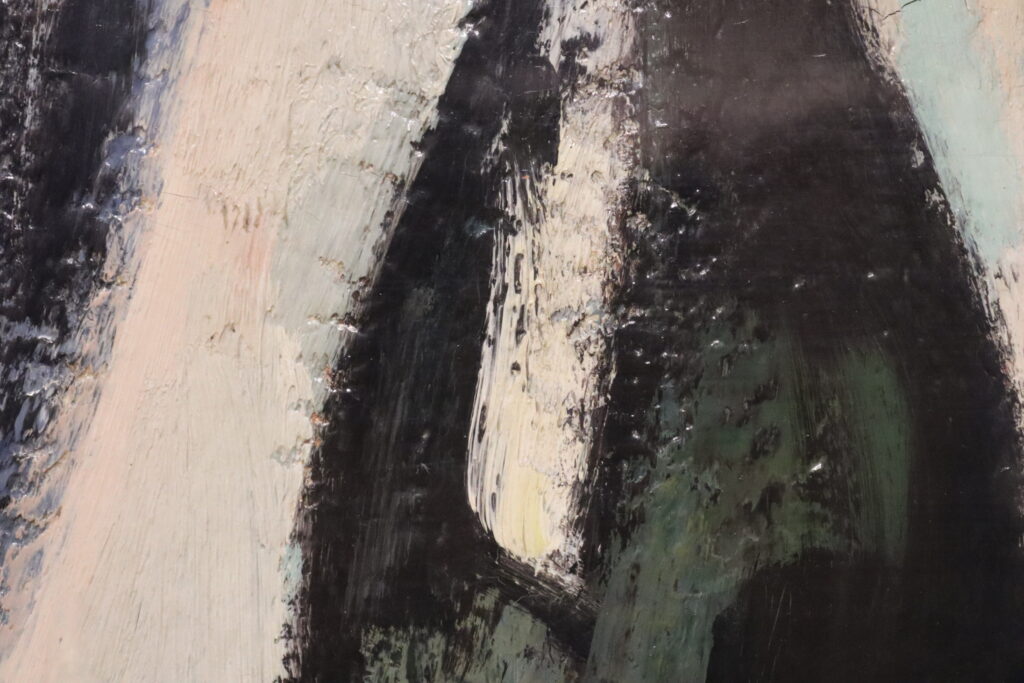(Written while studying ‘Stlll Life’ by Samuel Peploe in Greenock in the McLean Museum and Art Gallery.)

The colour palette is subdued. The jug and fruit stand are essentially white – likewise the fabrics and napkins. Apples with their full colour are prominent but the highest accolade is with the oranges on the raised platter. There is no interest in the supporting wood table. It is there to give a physical touchstone to the creation. The creation upon it is the only thing of interest. The round vase could be missing its top lid. How could this have happened? Is there something contained within the vase? A solitary apple sits in the empty foreground – presumably to cheer it up.
The dark wine bottle shouts cheerfully – yes I am here to give a measure of height into the space. I may be empty – or not and I probably do not have a label. Would I look better anywhere else in the picture? Probably not. Myself would I have chosen grim black? Perhaps not – a touch of blue would appeal to the colour senses, but very few bottles have been blue and for a good reason. A red bottle or a pink one would be ridiculous. A green bottle would be invisible. Not all colours would seem to be available. If you look at the bottle, however, you are likely to miss the form of the chair behind it – as perhaps planned. Just a lowly functioning chair of commonplace utility. It is so obviously screened in fabric to subdue the chair’s presence in the composition.
The upper background is a bit on the empty side – just as planned, after all everyone should be looking into the more interesting areas of the creation in the middle and foreground.
An orange is hiding behind the jug – as if to add some interest there, but only in brief measure.
The technical elements of the painting style can be observed at leisure – the brush/palette knife strokes to create the fruit for example. The boundaries between objects seem unresolved by dabs of paint at close inspection, but to the eye at a distance there appears no confusion.

There is very much the impression that the artist knows what he is doing and can paint at a pace. It’s also possible to imagine the whirls of paint on the artist’s palette. Such is the story told in a painting.


His brother in law Frederick Porter wrote about Peploe’s obsession with preparing before beginning a work:-
“… All his still lifes were carefully arranged and considered before he put them on canvas. When this was done – it often took several days to accomplish – he seemed to have absorbed everything necessary for transmitting them to canvas. The result was a canvas covered without any apparent effort. If a certain touch was wrong it was soon obliterated by the palette knife. The whole canvas had to be finished in one painting so as to preserve complete continuity. If, in his judgement, it was not right then the whole painting was scrapped and painted again…”